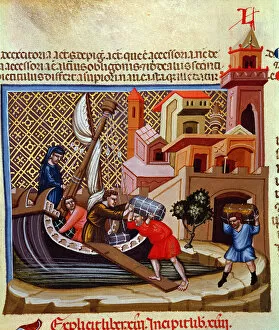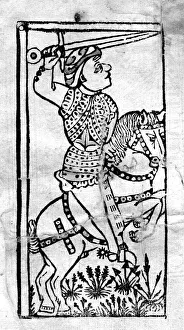14th 15th Centuries Collection
The 14th and 15th centuries were a time of great historical significance, marked by the rise of influential figures and notable events
All Professionally Made to Order for Quick Shipping
The 14th and 15th centuries were a time of great historical significance, marked by the rise of influential figures and notable events. Juan de Torquemada, the Grand Inquisitor, left his mark on this era with his relentless pursuit of heretics. An engraving from the collection Illustrious Men captures his imposing presence. Meanwhile, Martin I El Humano reigned as King of Aragon and Catalonia during these tumultuous times. A portrait depicts him alongside his son Martin The Young, showcasing their regal stature. Trade thrived in this period as well, evident in a miniature from Codex Justinian Institutiones Feodorum et Alia depicting goods being shipped on a boat. This image serves as a reminder of the economic prosperity that fueled cultural exchange. Religious reform also played a significant role during this era. Hus John, an influential Czech religious reformer and writer who later became Bishop of Lodi, is depicted passionately preaching to his followers. Artistic endeavors flourished too; an engraving titled "The gentleman Paris" showcases the beauty and craftsmanship found in incunable editions printed at that time. St. Vincent Ferrer stands out as a prominent Dominican theologian and preacher whose sermons captivated audiences across Spain. His impact is captured in a vivid scene portraying him engaging with listeners. Monuments also bear witness to history's passage; the tomb of Charles III of Navarre and Eleanor of Castile within Pamplona Cathedral serves as a testament to their enduring legacy. Tragedy struck when Roger de Flor and other almogavars met their demise at the hands of Byzantines in 1305. A poignant drawing from 1920 immortalizes this event forevermore. Symbolism was prevalent throughout art forms such as miniatures illustrating "Dance of Death, " where archbishop, knight, monk, and military personnel are portrayed facing mortality together—a reflection on the transient nature of life.













